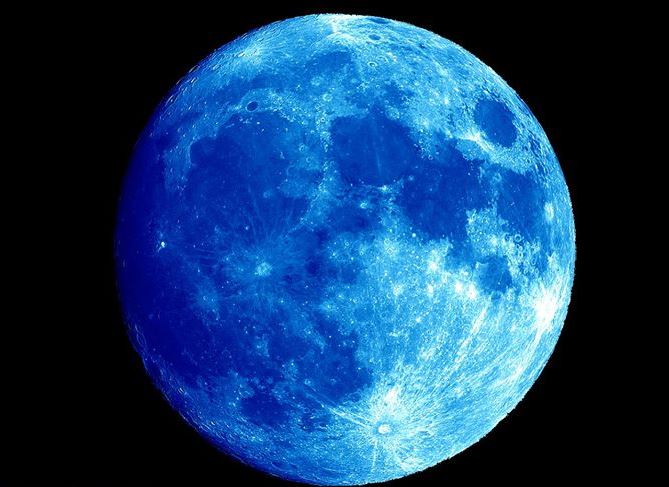Blue Moon has two definitions. Both are a type of Full Moon but have nothing too special to do with color. If the Moon looks like a blue circle, it’s merely because of dust in the atmosphere.
The other is the term ‘Once in a Blue Moon’ which suggests something happens very rarely.
A ‘Blue Moon’ is an infrequent phenomenon that involves the appearance of an additional full moon within a certain period. But when?
An older meaning defines a ‘Blue Moon’ as the third full moon in a certain season that has four full moons.
According to NASA, it is called a seasonal Blue Moon and occurs about every 2.5 years.
The term Blue Moon has also been applied to the second full moon within a single calendar month. There are approximately 29.5 days between full moons that make it unusual for two full moons to fit into a 30 or 31-day-long month. In fact, this also means that February will never have a Blue Moon.
Another monthly Blue Moon will be seen on October 31, 2020, says NASA. The last Blue Moon was on March 31, 2018.
Likewise, there was also a seasonal Blue Moon on Saturday, May 21, 2016, in the spring of 2019 and the third full moon was on May 18, 2019.
Origin of the term
The “Once in a Blue Moon” phrase has been more than 400 years, Philip Hiscock, a folklorist at the Memorial University of Newfoundland, has said.
The meaning evolved to something similar to ‘never,’ according to him.
NASA says most Blue Moons look pale gray and white.
Sometimes, the moon can appear bluish, as it did in 1883 after the eruption of Krakatoa. The dust in the air acted as a filter that caused sunsets and the moon looked green and blue. This has been an unusual event, which NASA said is thought to have generated the phrase ‘Blue Moon’.
Here, according to Hiscock, the meaning of “once in a blue moon” came from ‘never’ to ‘rarely’.
When does a Blue Moon occur?
The usual definition for ‘Blue Moon’ has been traced back to 1937 issue of the Maine Farmer’s Almanac. It has explained that the moon ‘usually comes full 12 times in a year, three times for each season’.
However, occasionally, there will come a year when there will be 13 full moons during a year. That extra full moon meant that one of the four seasons would have four full moons rather than the usual three.
(With inputs from Agencies)









Comment